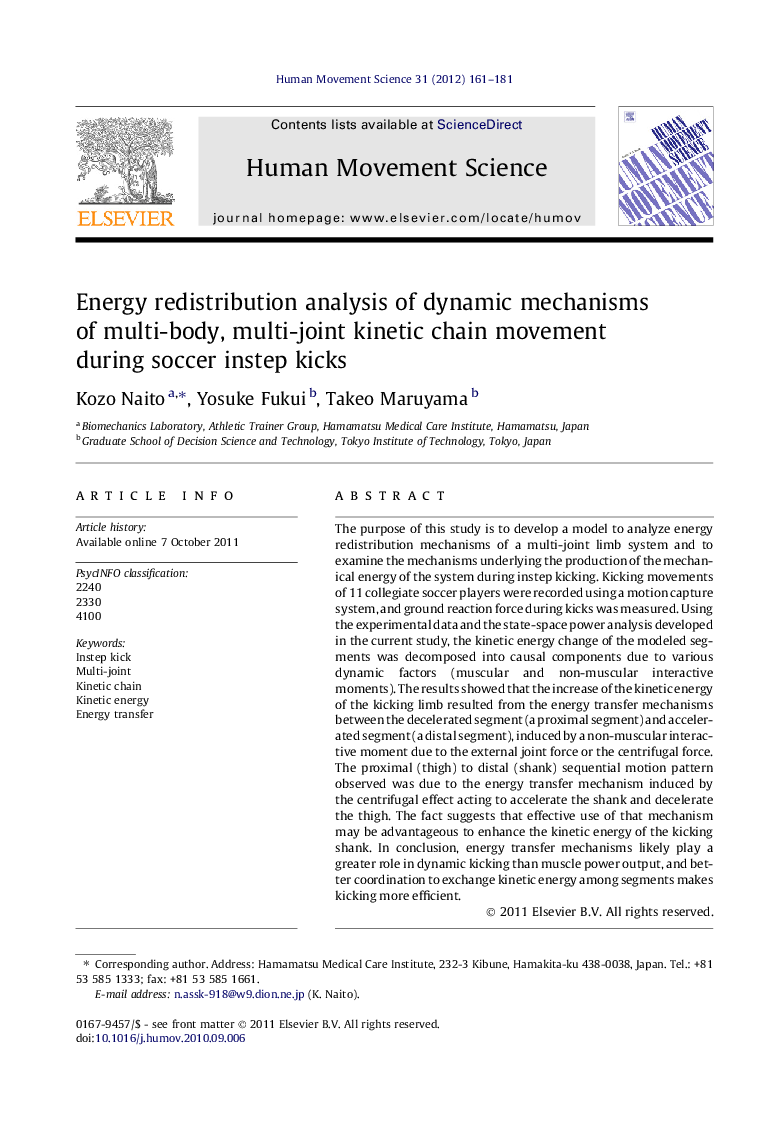| Article ID | Journal | Published Year | Pages | File Type |
|---|---|---|---|---|
| 928559 | Human Movement Science | 2012 | 21 Pages |
The purpose of this study is to develop a model to analyze energy redistribution mechanisms of a multi-joint limb system and to examine the mechanisms underlying the production of the mechanical energy of the system during instep kicking. Kicking movements of 11 collegiate soccer players were recorded using a motion capture system, and ground reaction force during kicks was measured. Using the experimental data and the state-space power analysis developed in the current study, the kinetic energy change of the modeled segments was decomposed into causal components due to various dynamic factors (muscular and non-muscular interactive moments). The results showed that the increase of the kinetic energy of the kicking limb resulted from the energy transfer mechanisms between the decelerated segment (a proximal segment) and accelerated segment (a distal segment), induced by a non-muscular interactive moment due to the external joint force or the centrifugal force. The proximal (thigh) to distal (shank) sequential motion pattern observed was due to the energy transfer mechanism induced by the centrifugal effect acting to accelerate the shank and decelerate the thigh. The fact suggests that effective use of that mechanism may be advantageous to enhance the kinetic energy of the kicking shank. In conclusion, energy transfer mechanisms likely play a greater role in dynamic kicking than muscle power output, and better coordination to exchange kinetic energy among segments makes kicking more efficient.
